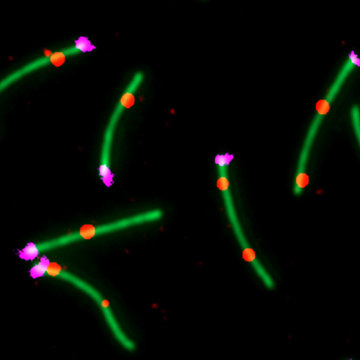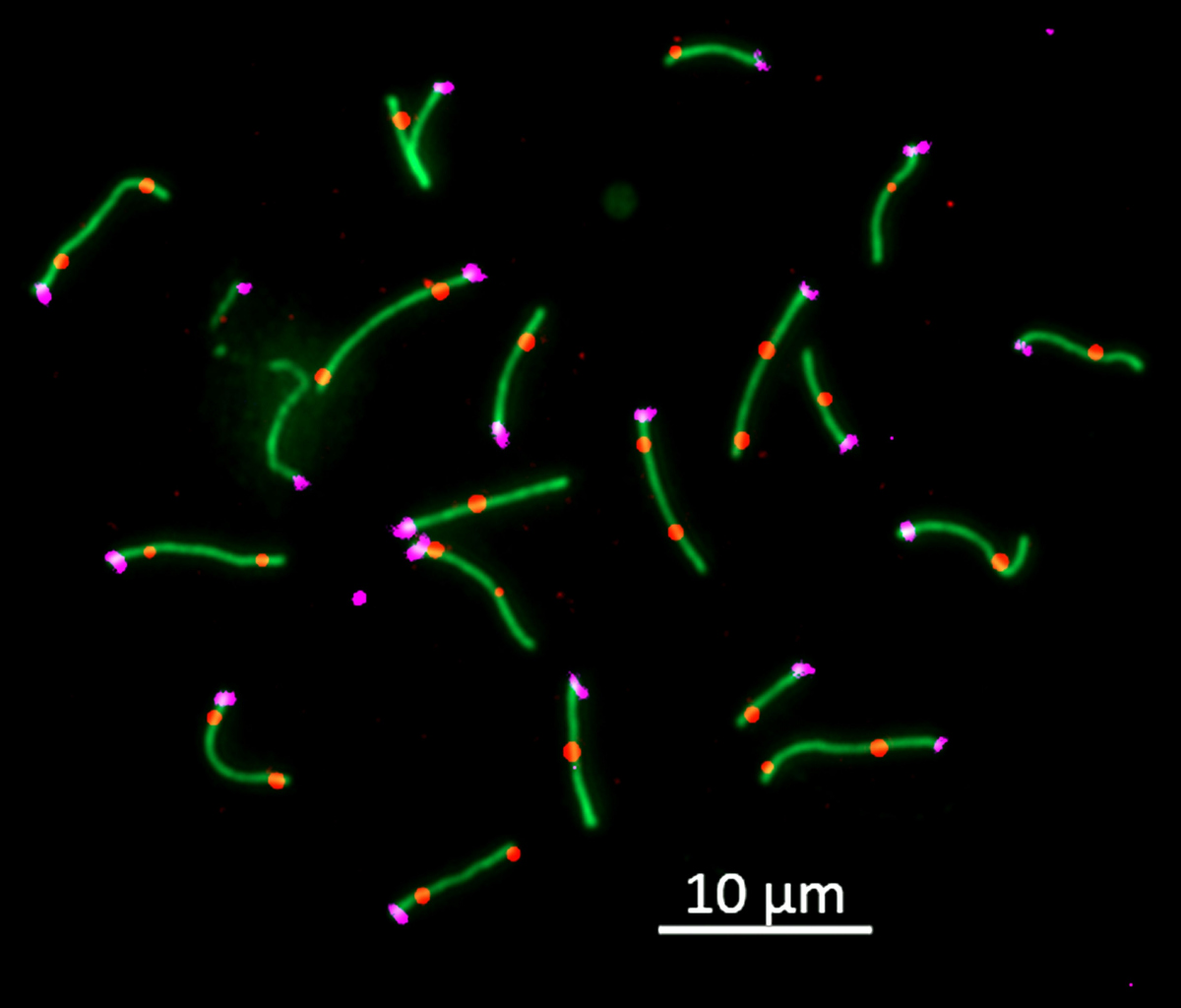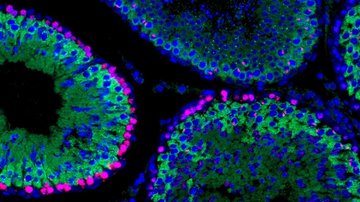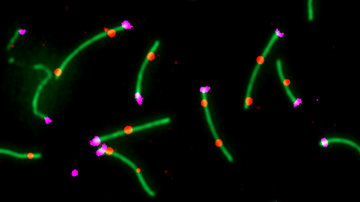
Molecular mechanisms of germ cell development
Czech mice (and Czech geneticists) help to discover the secret of DNA breakage in sperm production
The carrier of our genes - DNA - is vulnerable and needs protection, as DNA breakage in our somatic cells can lead, for example, to malignancy. Even more dangerous are the undesired DNA breaks in our germ cells (e.g., in developing sperm), as they can spread to all offspring cells via cell divisions during fetal development.
Nevertheless, regulated DNA breakage (and subsequent repair) is necessary for normal development of germ cells. This process must therefore be precisely and strictly controlled by the cell. One way to protect important regions of germ cell DNA is to direct DNA breaks from genes into less important regions. In both mice and humans, the Prdm9 gene is important for directing DNA breaks. The Prdm9-deficient mice examined thus far could not produce offspring. However, the Prdm9 gene is not indispensable for fertility in canids, birds, and likely in human. It was therefore unclear whether and how the results of mouse research can contribute to the knowledge of the mechanisms of development of human germ cells.
The scientific team lead by Zdenek Trachtulec from the Institute of Molecular Genetics of the Czech Academy of Sciences (in the BIOCEV center) has discovered male mice that do not require a functional Prdm9 gene to produce sperm or offspring. Wild-derived mice from the Czech Republic and the tradition of Czech genetics played a major role in this project. In collaboration with colleagues from the United States, Czech scientists have identified a possible cause for the difference in fertility of Prdm9-deficient mice: fertile males repair the DNA breaks in male germ cells more effectively than sterile males. Thus, Czech mice have become an excellent tool to study the development of human sperm and male fertility.



